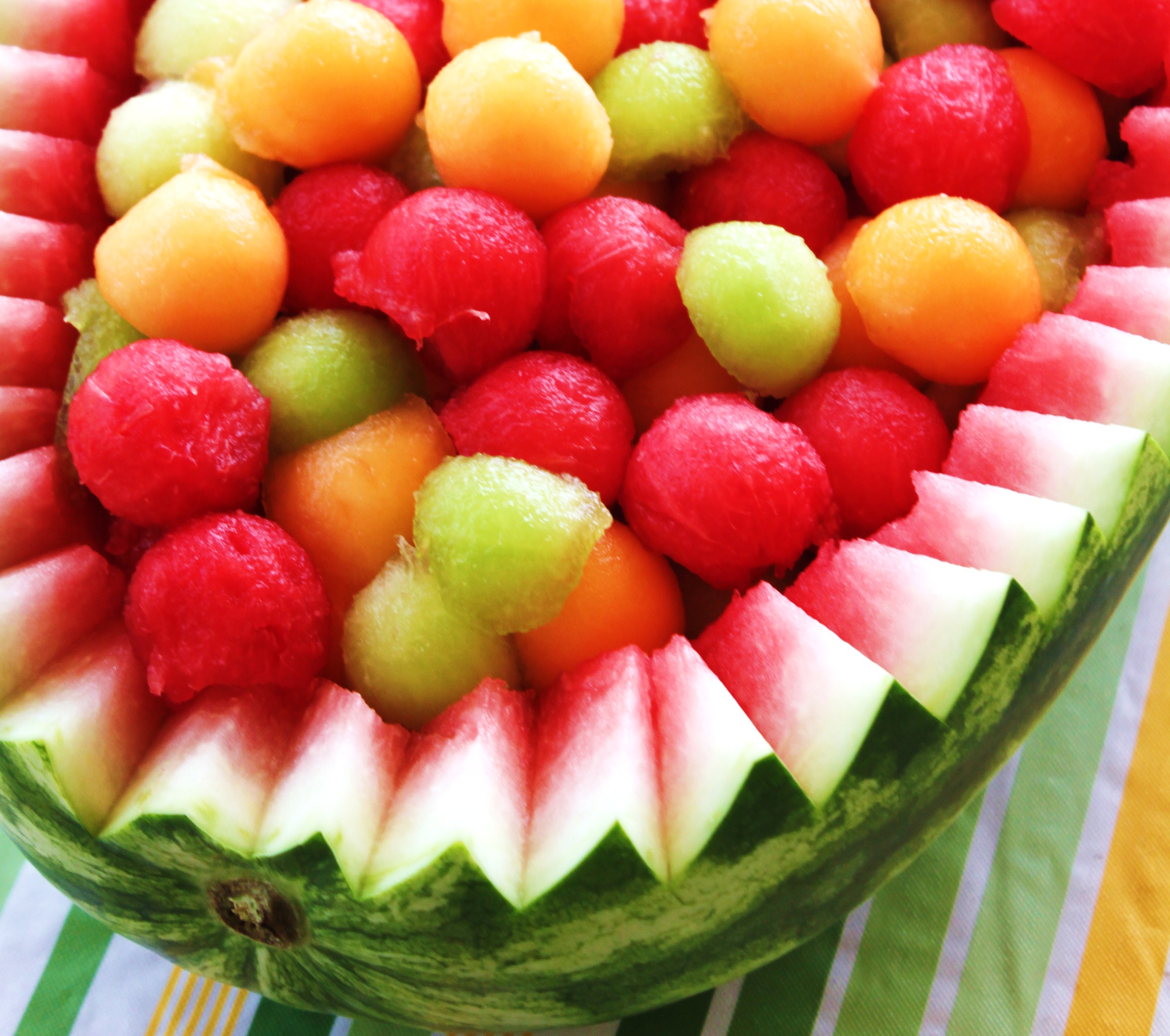Pick the Perfect Melon

I once listened to a funny Jerry Seinfeld standup bit about choosing fruit at the supermarket. He said, “You see cantaloupes rollin’ down the aisle….see the way that one’s fading left? That one’s not ready!...I don’t want that one.” Although this seems kind of silly and ridiculous, we’ve all been there trying weird ways to determine if a piece of fruit is ripe and delicious or not. Tapping, scratching, sniffing, squeezing, juggling, etc. Eventually, I just started tracking down the most knowledgeable looking produce professional and would have them pick out my produce for me. But that produce pro is not always easily accessible and sometimes you've just got to tackle this on your own. Well now you can look at those mountains of melon with confidence because I will help you know how to choose a real winner.
Watermelon:
Pick a dull-looking watermelon. If it is shiny, it is an under ripe melon. Look at the field spot, the creamy spot where it was laying on the ground. It should be a yellowish creamy color, like shown with the watermelon in this picture. The darker the color of the creamy spot, the longer it was on the vine sweetening up. If the spot is white, just put it back, as this is another indicator that it is under ripe. When you knock on your watermelon, your knuckles should bounce off. Look for a watermelon that is uniformly shaped. If it is uneven and lumpy, this could mean it didn’t get enough sunshine or water. And probably the easiest tip and general rule of thumb for almost any fruit is that it should be heavy for its size. This indicates there is a lot of water in it and makes for a more juicy fruit.

If you only cut up part of your watermelon, cover the cut end with plastic wrap and store it in the fridge. Store cubed or triangles of watermelon in an airtight container in the fridge. Either way, it will last two to three days.
Cantaloupe:
The key for choosing a great cantaloupe is smell. Smell the vine end of the fruit and it should have a sweet, slightly musky scent. This cantaloupe is ready. The stronger the smell, the more ripe the fruit is. It should have a lot of netting all over the cantaloupe and be heavy for its size.
If you cannot find a cantaloupe that is all the way ripe at the store, bring it home and let it ripen at room temperature on your counter for up to two days. Storing it in a brown paper bag will speed up the process. You can refrigerate a whole ripe melon for up to five days. If you cut it into wedges, you will want to cover all the surfaces and refrigerate for up to three days. If at all possible, try and leave the seeds intact and it will not dry out. Cubed cantaloupe without seeds can last in the fridge for one to two days in an airtight container.
Honeydew:
Choosing a good honeydew is very similar to the other two. Smell is also the biggest indicator for honeydew. Smell the stem end of the fruit and see if it has a pleasing melon aroma. Stay away from the honeydew that are shiny, as it can mean they are under ripe. Look for ones that are all, or mostly all yellow, not green. Try to choose one that feels waxy or velvety to the touch, as opposed to smooth. And once again, choose a melon that is heavy for its size.
Happy melon hunting!
- https://www.realsimple.com/food-recipes/shopping-storing/food/fresh-pick-cantaloupe-00000000038161/index.html
- https://www.realsimple.com/food-recipes/shopping-storing/food/fresh-pick-cantaloupe-00000000038161/index.html
- https://chowhound.chow.com/topics/433552
- https://chowhound.chow.com/topics/433552li>
- https://voices.yahoo.com/how-cut-store-freeze-watermelon-3467091.html
 Mary Richardson
Mary Richardson
Monthly Newsletter Contributor since 2014
Email the author! mary@dvo.com
